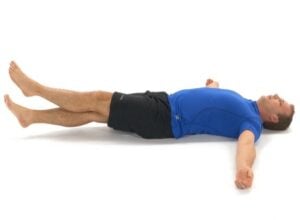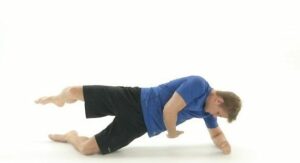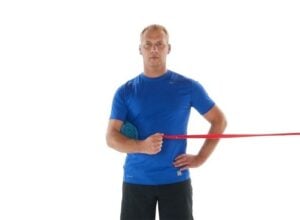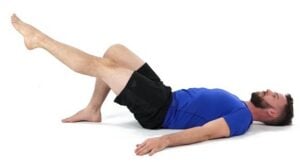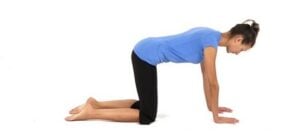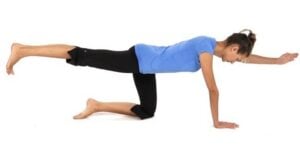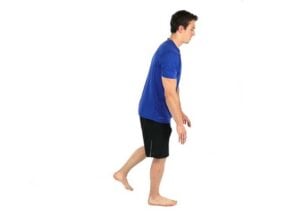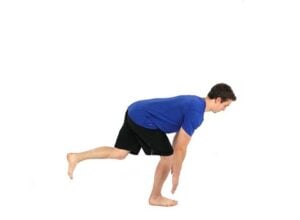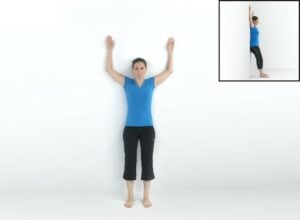Call Us
by Giacomo Silvestri
updated July 15, 2020
Pool Closed? How to Maintain and Improve Swim Fitness at Home.
If you are a swimmer or triathlete you’ve probably been hit hard by the recent closures of pools, gyms and recreation centres. Sure, some of us may have access to an endless pool in our basement, but the majority of us have to put our swim training on hold for the time being. Since we can’t get into the water, a lot of our swimmers have been wondering “what can we do to maintain or improve our swim fitness outside of the pool?”. This article is going to show you exactly that. We are going to explore several easy ways in which you can, not only maintain your baseline fitness but actually improve your endurance, strength and form in the water, and return to the pool a stronger swimmer than when you left.
How do I improve my swimming endurance without a pool?
Whether you are doing a 100m in-pool event or a 3.8km open-water swim as part of an Ironman distance triathlon, swimming is an endurance sport. This is why the first component we need to consider is maintaining (or even increasing) our aerobic endurance. You can think of this as “increasing the capacity of your engine”. The more efficient your heart and lungs are at taking in oxygen and sending it to your working muscles, the “easier” swimming will be. Although, as the three time Tour de France winning cyclist Greg LeMond famously once said “it doesn’t get any easier, you just get faster”.
Both cycling and running (indoors or outdoors) can be very effective ways to stay on top of your cardiovascular fitness outside of the pool. Whichever you choose is completely up to you. If you have a personal preference between the two then you can easily pick the activity that you would rather spend more time doing, or if you like both running and cycling equally you can divide your time between the two. The only scenario in which we suggest being cautions is if you are a “pure swimmer” who wants to start running and have never taken part in a running program before or have been injured with running in the past.
How long should I be doing cardio for to improve my swimming discipline?
The basic guidelines are to match your cardio workout to your event in the water. So if you are more of a sprinter, you’ll want to do more of an interval type of workout where you may run for a total of 20-30 minutes, but include five 30-second to 1-minute sprints followed by a 2 minute recovery in the middle of your run. On the other hand, if you are a more of a long-distance athlete, you would be better off doing a longer run/cycle (about the length of your event) at a more endurance pace. If you are lucky enough to have heart rate data from workouts in the water, try to match the heart-rate zones inside and outside of the pool.
What are the top dry-land strength exercises for swimmers?
On top of building aerobic endurance for swimming, we also need to develop strength and muscular endurance in the muscles we use for swimming to improve our stroke. If we go back to our car analogy, we can think about this can be thought of as “building a better chassis”.
TOP 3 CORE EXERCISES FOR SWIMMERS
Building a strong core is key to being more efficient and faster in the water. The more stable your core is, the better you are able to rotate, and the more stable base you have to produce propulsive force with your legs and arms. Think about it this way, what is faster moving through the water, a kayak or an inflatable raft? If you can maintain a strong and stable core throughout your swim stroke, you’ll be better able to glide through the water and increase your overall efficiency.
Perform a circuit of 3 sets of each of these exercises:
1) PLANK (1 min hold)
- start in all fours, then prop yourself up on your forearms and toes, with your chin tucked in.
- Lift up your body, creating a straight line with your body.
- Maintain the position without arching the lower back.
2) SCISSOR KICKS (1 min)
- Lie flat on your back with your arms out to the sides and your palms up.
- With one leg straight up in the air and one leg parallel to the floor, simultaneously switch one leg with the other.
3) KNEELING SIDE PLANKS with ROTATION (12 reps per side)
- Laying down on your side, bend your knees to 90 degrees and place your legs in line with your body.
- Place your elbow on the ground right underneath your shoulder.
- Lift your pelvis from the ground and separate your knees.
- With your arm pointed in the air, rotate your arm underneath your body as far as possible.
EXERCISES TO IMPROVE YOUR SWIM STROKE
After you’ve built a strong and stable core, the next step is to build your ability to produce speed by increasing the strength of the muscles you use to perform your swim stroke and kick. The more strength and endurance you have in these muscles, the faster and longer you’ll be able to go in the water. Furthermore, some of these exercises will help you develop proper form by building appropriate movement patterns for swimming. These proper movement patterns allow you to use these muscles in the most efficient way, which makes you less tired over the long haul.
Perform a circuit of 3 sets of each of these exercises:
1) EXTERNAL ROTATION with BAND (15 reps per side)
- Anchor a resistance band at elbow height at your side and place a rolled towel between your arm and body.
- Keeping your elbow on the towel roll, rotate your arm out against the resistance of the band.
- Make sure your elbow does not come away from your body.
- Return and repeat.
- Keep the elbow bent 90°.
2) HIGH ELBOW CATCH ROWS (15 reps per side)
3) SUPERMANS (10 reps per side)
- Lie on your stomach with your chin tucked in and one arm by your ear.
- Activate your lower abdominals (transversus abdomini) by bringing your belly button inward and by activating your pelvic floor muscles 20 to 30% of maximal contraction.
- Maintain a steady abdominal breathing while you lift your arm and opposite leg off the bed.
- Lower your arm and leg back down to the bed and repeat with the other arm and opposite leg.
AT HOME EXERCISES TO IMPROVE YOUR SWIM KICK
1) SINGLE LEG BRIDGING (12 reps per leg)
- Start by lying on your back and bending one knee.
- Lift on leg off the floor and go up into a shoulder bridge, peeling one vertebrae at a time.
- Keeping the leg out straight and the thigh in line with the other thigh, lower yourself on the ground and lift yourself back up, peeling one vertebrae at a time.
2) BIRD DOG (12 reps per side)
- Get on your hands and knees (four point position) with your knees directly under your hips and your hands directly under your shoulders.
- Your back is in a neutral position (slightly arched) and your chin must be tucked in.
- Tighten slightly your abdominals, lumbar muscles and pelvic floor muscles then lift one arm and the opposite leg without allowing the trunk or pelvis to move or rotate.
- Try to grab something far away in front of you with your hand and touch an imaginary wall far behind you with your foot instead of just lifting them up.
- Lower your leg and arm back to the floor and repeat with the other leg and the opposite arm.
3) SINGLE LEG DEAD-LIFT (12 reps per leg)
- Stand on one leg.
- Keep the opposite leg bent to about 90°, chest out and shoulders back.
- Hinge at the hips, keeping your spine neutral.
- Drop down as far as possible until you feel a tension in your hamstrings of the support leg.
- Return to the standing position using your glutes and hamstrings to lift you up.
How can mobility exercises improve swimming performance?
The final component of improving your swimming ability, is increasing mobility and flexibility to improve your ability to slip through the water. To complete our car analogy, this is the “aerodynamic body style” you would see in a Formula 1 race car. In order to move through the water efficiently, you need to be able to make yourself as “small” or “slippery as possible in the water. This reduces the amount of resistance you have to push against in the water, which means you have to work less and can move through it more efficiently. This typically involves improving the mobility in your spine, hips and shoulders. Addressing these movement restrictions can help maintain your body in the proper alignment, improving your overall body position and ability to glide through the water.
Furthermore, improving your spinal rotation and arm movement helps maintain your balance in the water.
1) BRETTZEL
- Start by lying on your back and bending one knee.
- Lift on leg off the floor and go up into a shoulder bridge, peeling one vertebrae at a time.
- Keeping the leg out straight and the thigh in line with the other thigh, lower yourself on the ground and lift yourself back up, peeling one vertebrae at a time.
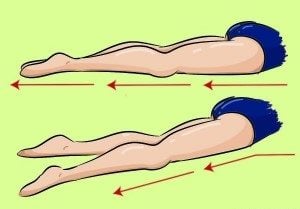
2) WALL SLIDES
- Stand with your back flat against the wall, feet in front.
- Try to keep your hips/shoulders/head/elbows on the wall as you slide your arms up and down slowly.
- Keep the lower back against the wall.
3) KNEELING HIP FLEXOR STRETCH
- Kneel on one knee creating a 90° angle with the opposite hip and use a chair for support.
- Tilt your pelvis backwards to flatten your lower back and transfer your weight forward until you feel a gentle stretch on the anterior aspect of your hip of the lower leg.
- Maintain the position and relax.
- Maintain your upper body upright and your lower back flat (not arched).
It is should be very evident at this point that there are many things we can do outside of the water to maintain or improve our swimming ability. Make sure you use this time effectively and improve these areas that are commonly lacking in swimmers, leading to poor form and even contributing to potential injuries. Overall, if you are able to build your cardiovascular capacity, increase your core and propulsive muscle strength and increase your swim-specific mobility you’ll be more balanced, more efficient and faster than ever in the water.
If you’d like specific advice on training around an injury, we’d be pleased to provide you with a virtual physiotherapy appointment with a registered therapist. Learn more by clicking HERE.
Giacomo Silvestri MScPT
Registered Physiotherapist
Giacomo is a highly sought after Toronto physiotherapist experienced in the treatment of a vast array of sports injuries. As a triathlete himself, he draws upon his own swim injury recovery and stroke improvement.

Questions? We're happy to help!
Choosing the right service provider can be a big decision. We’re dedicated to answering any questions you have to help you make the best choice. Contact us today and ask us anything!
Call us at (416) 238-6749




